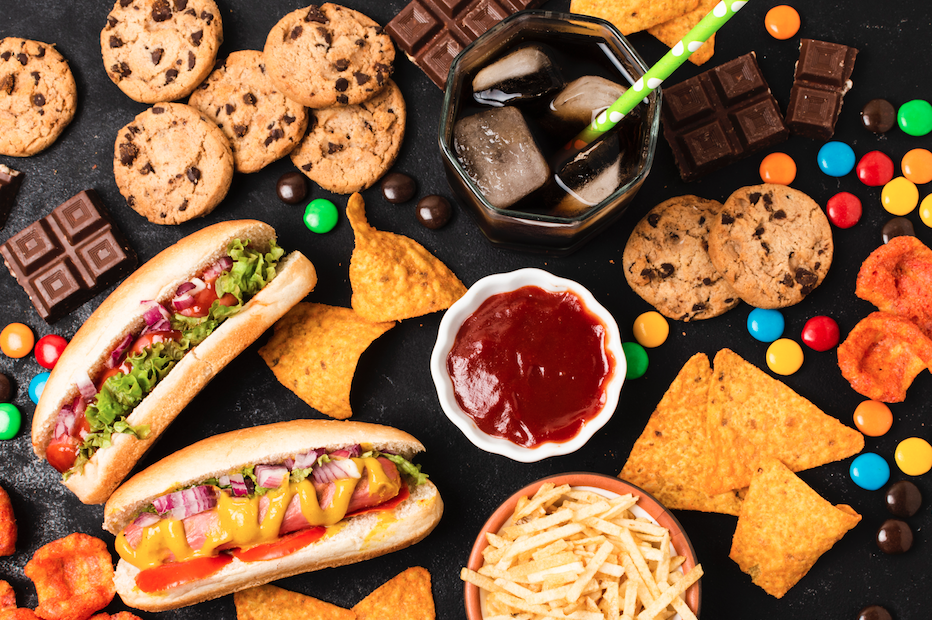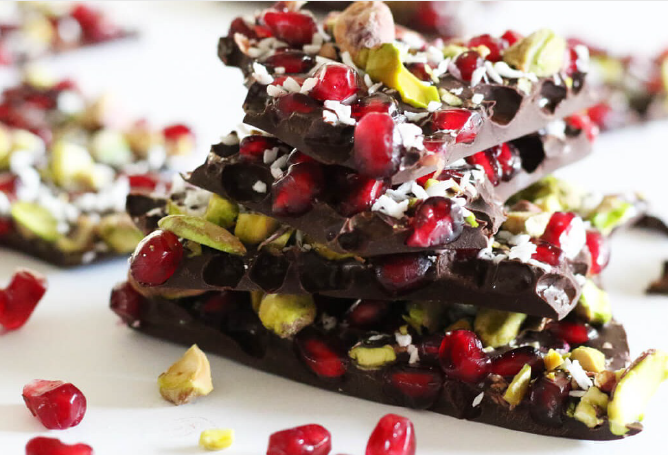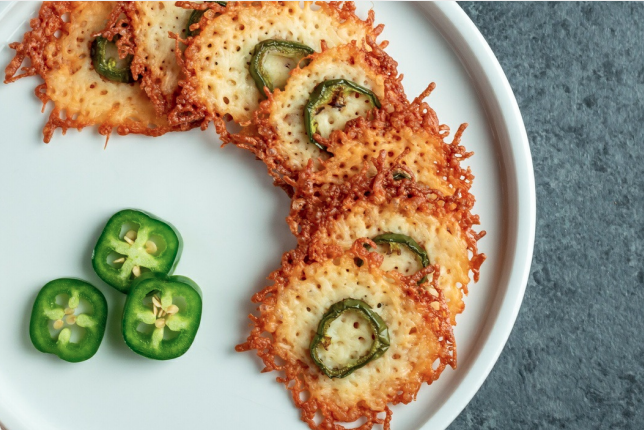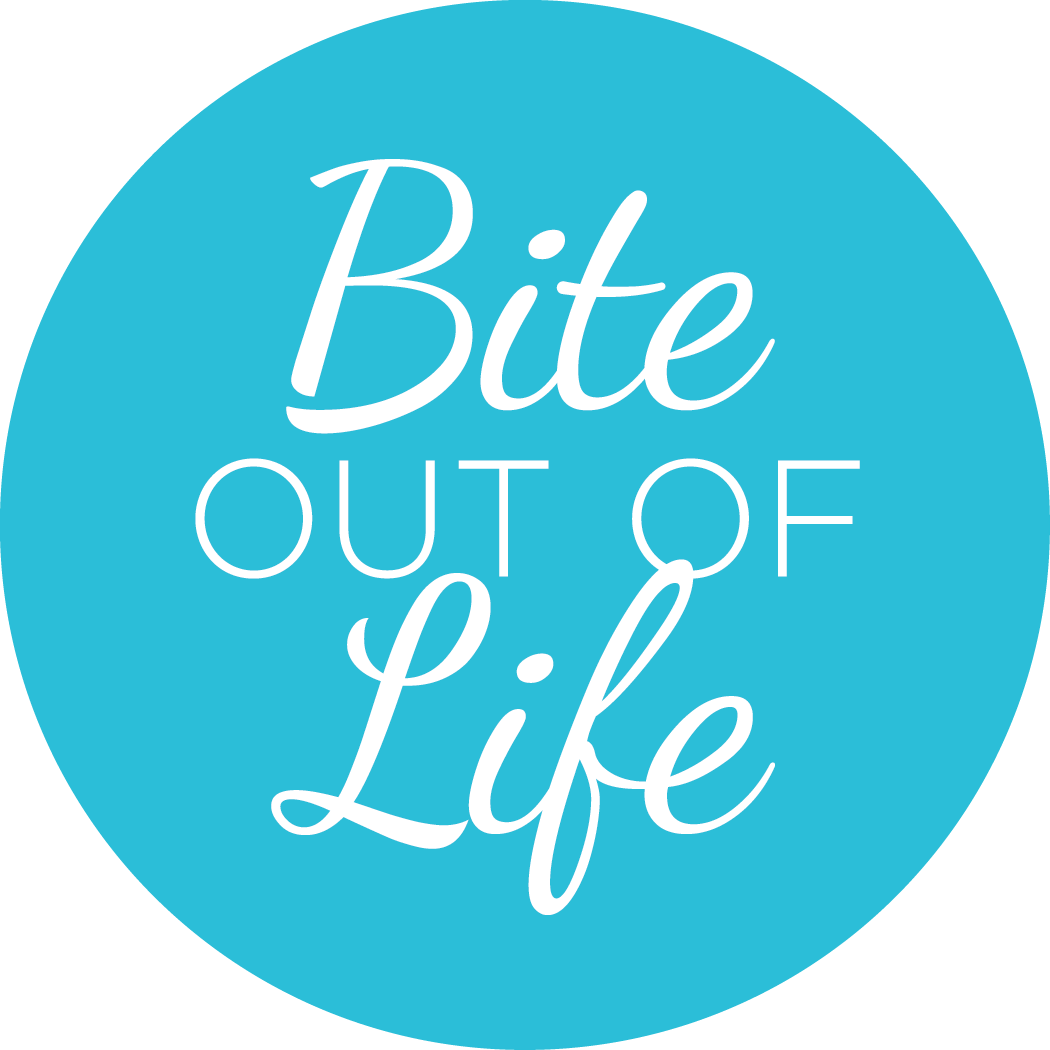
Smoking is declining – thank goodness! In 1965, 49% of Canadians over the age of 15 smoked daily. Since the 1970s when a concentrated push toward anti-smoking campaigns and government interventions in the tobacco industry began, the decline has been steady. In fact, last year, just under 16% of people over aged 12 were smoking. Still that’s roughly 4.9 million Canadians who are ruining their health every day.
But it’s not smoking that will kill most of us. It’s what we eat. And specifically, the JUNK FOOD we ingest.
That’s what we’re going to look at today – J is for Junk food. And its effects on your hormones as well as the possibility of its contribution to an early death (and no I’m not being dramatic – a 2017 published study says that fully 20 percent of global deaths are directly attributable to poor diet, mostly contributing to cardiovascular disease and cancer).
Let’s start by defining junk food. It’s easy to point to chips and soft drinks but honestly, my definition is a little broader. Ultra-processed foods – even if they come labelled as ‘healthy’ or ‘better for you’ or ‘low in fat/sugar or gluten-free’ – are not your best choice. And the vast majority of the time, I’d consider them junk. (Yep, there are organic Oreos out there – Avoid! Avoid!)
When foods are processed – any number of chemical or artificial ingredients and procedures are used to aid in shelf life, boost flavour, increase palatability (when you take out one ingredient you always need to compensate by adding others – lower fat often means higher sugar and salt!) and sometimes increase the speed with which you can prep foods to eat on the run.
In 2015, the average Canadian over the age of 2, ate about 61% processed or ultra-processed food each day. That includes about 6% of processed ingredients (think canned beans or tomatoes – which are not the worst options by any means). But even taking that into account, 55% of what was eaten everyday may or may not resemble real food. I know it’s 2019 – but you can bet that given the trends in eating, this number is not going down and is more likely on the rise.
As mentioned, foods that are labelled organic, ‘natural’, GMO-free can be junk foods if they are highly refined. These foods are often refined so much that they barely resemble the actual whole food they came from. And as such, even though they may have started out as beautiful organic products, once put through all the processing, they too are lacking nutrients. Talk about empty calories – that’s pretty well what you are getting with ultra-processed foods.
What does junk food do to your body?
I think we are all pretty clear about the detriments of a high sugar, industrialized oils, fibre-less diet on digestion, inflammation and raising the risk of certain diseases ….. I could go on and on.
You need look no farther than Pulitzer Prize winner Michael Moss’s excellent investigative book Salt Sugar Fat: How the Food Giants Hooked Us to see the full picture on how processed food companies and their scientific development teams find ways to add sh#t to their food products that tickle our brain’s ‘bliss points’ in the very same way other addictive substances like tobacco and cocaine do. Eat – bliss out – crave – eat more – need more – bliss more – crave more. That’s the chemical cascade these companies are counting on.
Along the way…. as the neurotransmitters and happy hormones like serotonin are pinging wildly in your brain and your gut saying, “Wheeee! More please!”, what else is going on? Well, your fat storage hormone – insulin is pumping out like mad, and signalling your body to hold on to every extra calorie for a rainy day. Your hunger/satiety hormones – leptin and ghrelin – are confused about when to shut off and when to call for more food. And your stress hormones are on the rise as your body’s hunt for more-more-more pleasure and satiation continues.
Have a listen here to an insightful interview with Moss about what he learned about the strategy and science of ultra-processing and its effects on human health.
Long Term Outcomes
The negative impact of food processing goes far beyond the addition of salt, sugar and fat to hook us. The various chemical application and processes that go in to making foods shelf stable or prepared to be reconstituted, reheated or remolded into something that is supposed to resemble a real food (Tofurky – I am talkin’ about you!) are rife with horrifying practices that while approved as ‘safe’ for humans should really make you think about what you buy.
Bleaching, chemical washing, purification, pasteurization, gassing, fractionation, irradiating, the addition of emulsifiers, preservatives, artificial colours and flavours – the list is endless and the more that is done to process a product, the farther away it moves from being a real food. You know that Pringles potato chips are only 42% potato, right?
All of these additives and the processes that change the constitution of food to faux food are potential endocrine disruptors – you know, the system that is made up of all your hormonal responses – which can reprogram the body’s relationship with nutrition at a cellular level. These disruptors can change the sensitivity to glucose and the metabolism of lipids which unfortunately will predispose a person to store fat. Some studies also say that with enough exposure, fertility and brain health can be permanently impacted.
Can Junk Foods be Healthy?
That’s the million dollar question, isn’t it? Remember, that as consumer demand for healthier foods grows, so does the market opportunity for food processors – of all stripes – to get into that sector. Keep in mind – just because it’s labelled ‘organic’, does not mean it has not been processed into something a lot less healthy than the food it started out as. And organic/health foods can also have too much sugar, salt, fats as they are developed to meet a wider consumer demand. So buyer beware!
So can you ever eat junk food and feel good about it?
Renowned food writer Michael Pollan sums it up best: “Eat all the junk food you want – as long as you cook it yourself. That way, it’ll be less junky, and you won’t eat it every day because it’s a lot of work.”
I concur. So here’s a couple of junk food recipes for you to try to satisfy both your sweet tooth and when you have a savoury snack attack. They are quick to do and not very much work, I promise! Your endocrine system will thank you for leaving the Cheetos and Pringles and Snickers on the shelf!
Sweet Recipe: Pistachio Pomegranate Bark
Serves: 4
Ingredients:
- 7 ozs Dark Organic Chocolate (at least 70% cacao)
- 1 cup Pomegranate Seeds
- 1/2 cup Pistachios (shelled and chopped)
- 1/4 cup Unsweetened Coconut Flakes
Directions:
- Line a large baking sheet with parchment paper. Prepare the pomegranate seeds, pistachios and coconut flakes in bowls.
- Fill one large pot with water and place a smaller pot inside. Bring to a boil then reduce to lowest heat. Ensure no water is able to escape into the smaller pot! Break the dark chocolate into pieces and add it to the smaller pot. Stir continuously just until melted. Remove from stove top immediately once melted. Do not overheat as this will cause the chocolate to get lumpy.
- Pour the melted chocolate onto the baking sheet. Use a spatula to smooth the chocolate into an even layer, about 1/4 inch thick. Quickly sprinkle the pomegranate seeds evenly over top, followed by the pistachios and finally the coconut. Transfer to the fridge or freezer and let chill for 20 to 30 minutes, or until firm.
- Once the chocolate is firm, break or cut it into pieces. Enjoy!
Savoury Recipe: Roasted Jalapeño Cheese Crisps
Serves: 5
Ingredients:
- 1 Jalapeño Pepper (large, sliced into 1/4-inch rounds)
- 2/3 cup Parmigiano Reggiano (shredded)
Directions:
- Preheat the oven to 400ºF (204ºC).
- Place sliced jalapenos on a parchment lined baking sheet and cook in the oven for 8 to 10 minutes or until tender, flipping halfway through. Remove from the oven and let cool slightly.
- On a second parchment lined baking sheet, use a tablespoon to create piles of shredded cheese, one at a time, keeping them about 2 inches apart. Flatten each pile of cheese into a 2-inch circle and place a roasted jalapeno slice on top. Repeat in batches if necessary.
- Place in the oven and bake for 4 to 6 minutes or until golden brown around the edges and bottom. Remove from the oven and cool for 5 minutes before transferring to a paper towel lined plate to cool completely before serving. Enjoy!
REFERENCES
https://time.com/5562994/diet-disease-mortality/
https://www.mdlinx.com/internal-medicine/article/2868
https://www.ncbi.nlm.nih.gov/pubmed/23886479
https://www.endocrine.org/topics/edc/what-edcs-are/common-edcs/metabolic
